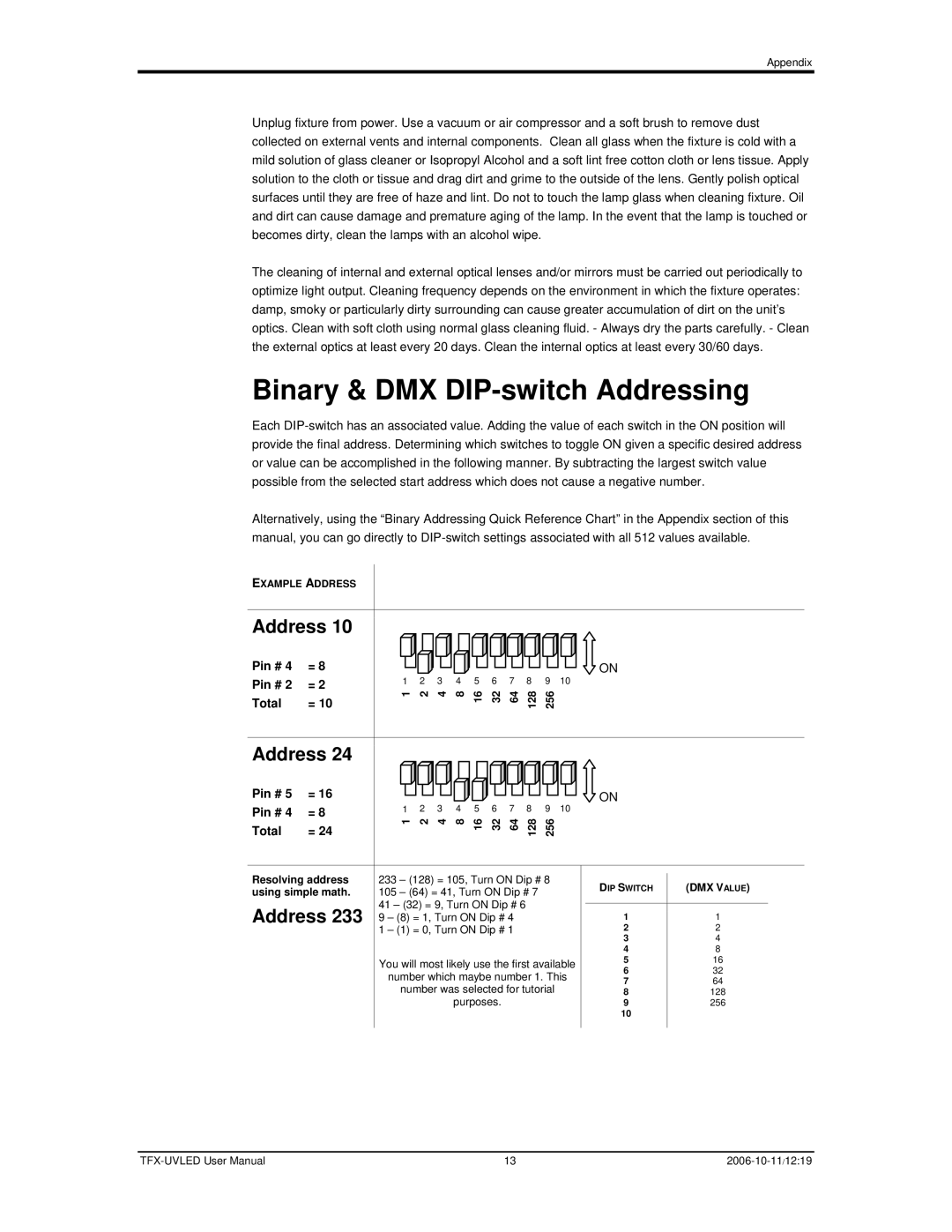
Appendix
Unplug fixture from power. Use a vacuum or air compressor and a soft brush to remove dust collected on external vents and internal components. Clean all glass when the fixture is cold with a mild solution of glass cleaner or Isopropyl Alcohol and a soft lint free cotton cloth or lens tissue. Apply solution to the cloth or tissue and drag dirt and grime to the outside of the lens. Gently polish optical surfaces until they are free of haze and lint. Do not to touch the lamp glass when cleaning fixture. Oil and dirt can cause damage and premature aging of the lamp. In the event that the lamp is touched or becomes dirty, clean the lamps with an alcohol wipe.
The cleaning of internal and external optical lenses and/or mirrors must be carried out periodically to optimize light output. Cleaning frequency depends on the environment in which the fixture operates: damp, smoky or particularly dirty surrounding can cause greater accumulation of dirt on the unit’s optics. Clean with soft cloth using normal glass cleaning fluid. - Always dry the parts carefully. - Clean the external optics at least every 20 days. Clean the internal optics at least every 30/60 days.
Binary & DMX DIP-switch Addressing
Each
Alternatively, using the “Binary Addressing Quick Reference Chart” in the Appendix section of this manual, you can go directly to
EXAMPLE ADDRESS
Address 10
Pin # 4 | = 8 |
Pin # 2 | = 2 |
Total | = 10 |
Address 24
Pin # 5 | = 16 |
Pin # 4 | = 8 |
Total | = 24 |
ON
1 | 2 | 3 | 4 | 5 | 6 | 7 | 8 | 9 | 10 |
1 | 2 | 4 | 8 | 16 | 32 | 64 | 128 | 256 |
|
ON
1 | 2 | 3 | 4 | 5 | 6 | 7 | 8 | 9 | 10 |
1 | 2 | 4 | 8 | 16 | 32 | 64 | 128 | 256 |
|
Resolving address using simple math.
Address 233
233 – (128) = 105, Turn ON Dip # 8 105 – (64) = 41, Turn ON Dip # 7 41 – (32) = 9, Turn ON Dip # 6
9 – (8) = 1, Turn ON Dip # 4 1 – (1) = 0, Turn ON Dip # 1
You will most likely use the first available number which maybe number 1. This number was selected for tutorial purposes.
DIP SWITCH | (DMX VALUE) |
11
22
34
48
516
632
764
8128
9256
10
13 |
